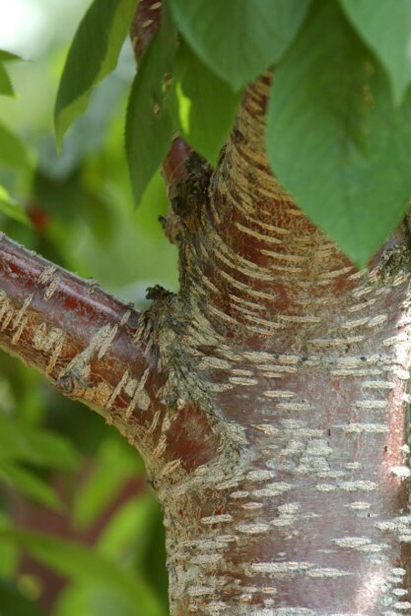Branch Out Columbus
Columbus is on a dedicated green mission to save the entire ecological fabric of its communities, and one way is by planting more trees.
The Columbus Green Community Plan (CGCP), first developed in 2005 under Mayor Michael Coleman, outlines the city’s vision, goals and actions towards “beautiful landscapes, healthy people and prosperity,” all within several targeted cross-functional initiatives. One of those, Branch Out Columbus, has become a catalyst initiative under the green plan objectives, scaling the average community tree-planting program to an expansive citywide engagement project, involving all neighborhoods, community stakeholders and city agencies.
The CGCP targets 10 different focus areas with goals aligned to the city’s vision for a more sustainable Columbus by 2020. Branch Out aims to increase urban tree canopy (UTC) a minimum of 1 percent annually over the next five years. That would leave Columbus with a total 27 percent canopy at the end of 2020, a moderate approach to progressing the city’s environmental and economic vision. At 22 percent UTC currently, the city would need to adopt a more aggressive tree-planting strategy to reach the 40 percent UTC as recommended by American Forestry for cities east of the Mississippi River.
“There is a lot of work wrapped into meeting all of our plan’s goals, including achieving 27 percent tree canopy,” says city councilmember, Elizabeth Brown. “We are moving full steam ahead towards meeting our goals.”
While achieving 40 percent UTC may be ideal, the Branch Out strategies must be supported by proper planting procedures and required resources for upkeep and care to sustainably meet and maintain the goals.
“For many years lots of communities had tree programs that didn’t focus on environmental benefits very well,” says Mike Hogan, associate professor of agriculture and natural resources at The Ohio State University Extension. “They planted a lot of species that are not very useful or long-lasting, and were even invasive. While we see a lot of communities excited about mass planting trees, we also must invest in the upkeep and ensure we have resources to maintain those trees and teach about planting best practices.”
Branch Out aims to go beyond the average citywide tree-planting program in several respects, mainly by taking a deliberate and strategic approach to the city’s tree-planting efforts to meet future sustainability criteria. The initiative wraps in the very specific objectives tied to the city’s overall green plan goals with a mission to engage and improve every Columbus neighborhood’s UTC. This neighborhood-by-neighborhood strategy is important—some neighborhoods currently contain only 13–15 percent UTC.
“There are neighborhoods lacking in healthy tree canopy cover,” says Elizabeth. “I would like to see more trees planted in neighborhoods so benefits are directly experienced where people live.”
The program aims to get communities involved as advocates for neighborhood sustainability in hopes of improving UTC, and to educate residents on tree selections, planting processes and maintenance methods for long-lasting ecological benefits.
So far, 30,000 trees have been planted and registered with the city’s tree tracker (which can be viewed on the city’s website) as a result of Branch Out. Amy Marsico, program coordinator at Branch Out, indicates that the city is trying to provide local nurseries bookmarks with QR codes so that residents are reminded to register their trees after planting for tracking and follow-up maintenance.
Additionally, the city plans to host a Fall Tree Give-Away on September 30. Columbus residents can register for the event on the city’s website.
“We can’t increase our tree canopy without the help of our residents and business community,” Amy says. “We can do more as a community working towards this goal.”
How Trees Affect the Air We Breathe
The cumulative and interactive effects of trees on meteorology, pollution removal and volatile organic compounds (VOC) and power plant emissions determine the overall impact of trees on air pollution. There are four main ways urban trees positively affect the air we breathe:
Temperature and other micro-climactic effects
- Tree canopies affect air temperature, which can alter pollution concentration in urban areas. Reducing air temperature improves air quality because the emission of pollutants is temperature dependent.
Removal of air pollutants
- Trees remove gaseous air pollution by uptake through the leaves and sometimes the plant surface. In urban areas with 100% tree cover, short-term improvements in air quality (one hour) from pollution removal by trees were as high as 15 percent for ozone, 14 percent for sulfur dioxide, 13 percent for particulate matter, 8 percent for nitrogen dioxide and 0.5% for carbon monoxide.
Emission of volatile organic compounds (VOCs)
- Emissions of VOCs by trees can contribute to the formation of ozone and carbon monoxide. Because VOC emissions are temperature dependent and trees generally lower air temperatures, increased tree cover can lower overall VOC emissions and consequently ozone levels in urban areas. Trees in parking lots can also affect evaporative emissions from vehicles, particularly through tree shade.
Energy effects on buildings
- Trees reduce building energy use by lowering temperatures and shading buildings during the summer and blocking winds in the winter. When the building energy is lowered, pollutant emissions from power plants are lowered. Proper placement near buildings is critical to achieve maximum building energy conservation benefits.
For more information or to get involved with Branch Out, visit the website.






